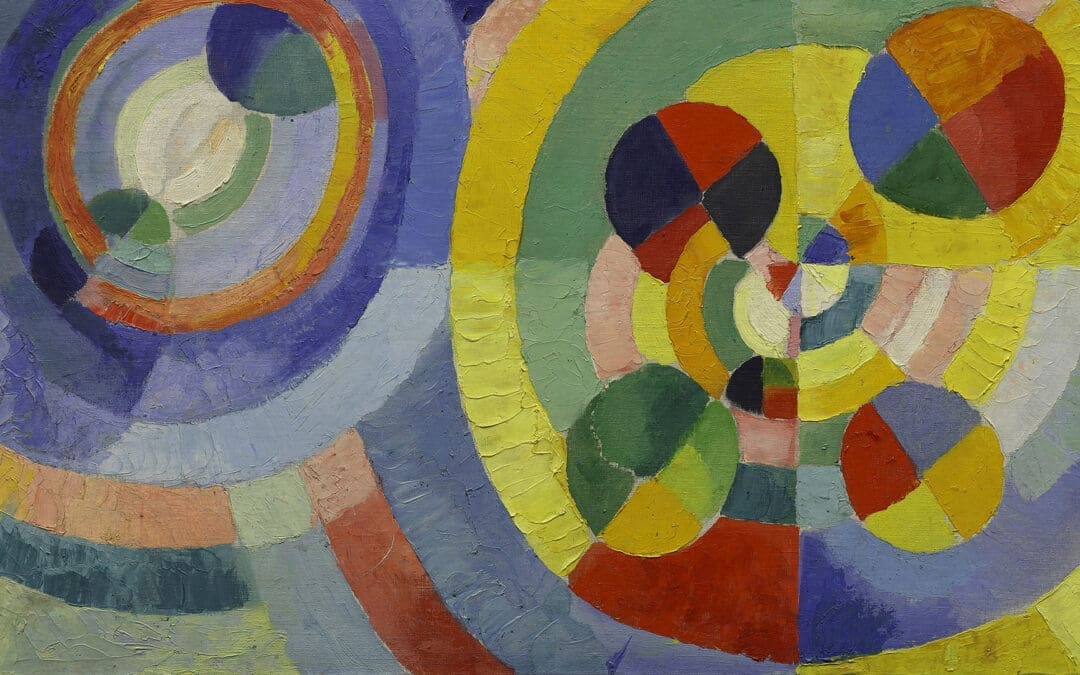Redemption
James K.A. Smith
Originally published March 2010, in tandem with the rest of the story:
Creation > > Fall > > Redemption
What love is this that would take such risks?
The covenant God of Israel and Father of Jesus Christ is an extravagant, inventive Creator who—in what almost looks like madness—entrusted the care and unpacking of creation to us, his creatures, commissioned as his image bearers. Deputized and gifted to carry out this mission of image-bearing cultivation, we are to work and play, to make love and art, to till the earth and transform its fruit into our daily bread while also incarnating our most outlandish dreams in cathedrals and skyscrapers. Such image-bearer culture-making will be most fruitful when it runs with the grain of the universe—when our work and play runs in the grooves of God’s life-giving norms.
Creation, then, comes with a mission and a vocation. Being God’s image bearers is a task and responsibility entrusted to creatures. If God created from and for love, then he also created us with the invitation to love the world and thus foster its—and our—flourishing.
But. . .
We confess—and all too often experience—a rupture in this carnival vision of creative love. While God’s self-giving love entrusted to us the care and cultivation of his creation, humanity seized this as an entitlement rather than receiving it as a gift. Thus our mission of unfolding the potential latent in creation took the form of unfettered invention rather than normed cocreation. While this creational impulse for poiesis could not be effaced or erased, this good creational impulsion to make became twisted and misdirected: instead of making love we made war (and now even when we make love we are prone to do so in ways that run counter to what’s actually good for us). Instead of cultivating the earth, we’ve created entire systems that rapaciously despoil it. Instead of normed making, humanity is prone to licentious breaking. We have failed to carry out the mission entrusted to us as God’s image-bearers.
And yet. . .
Our good Creator has not left us to our own devices. While we ruptured the plenitude of creative love, our condescending God has also ruptured our brass heaven, along with our desire to enclose ourselves in immanence, appearing in the flesh—our flesh—as the image of the invisible God. Jesus of Nazareth appears as the second Adam who models for us what it looks like to carry out that original mission of image-bearing and cultivation. The Word became flesh, not to save our souls from this fallen world, but in order to restore us as lovers of this world—to (re)enable us to carry out that creative commission. Indeed, God saves us so that—once again, in a kind of divine madness—we can save the world, can (re)make the world aright. And God’s redemptive love spills over in its cosmic effects, giving hope to this groaning creation.
So our redemption is not some supplement to being human; it’s what makes it possible to be really human, to take up the mission that marks us as God’s image bearers. Saint Irenaeus captures this succinctly: “The glory of God is a human being fully alive.” Redemption doesn’t tack on some spiritual appendage, nor does it liberate us from being human in order to achieve some sort of angelhood. Rather, redemption is the restoration of our humanity, and our humanity is bound up with our mission of being God’s co-creative culture-makers.
While God’s redemption is cosmic, not anthropocentric, it nonetheless operates according to that original creational scandal whereby humanity is commissioned as ambassador, and even co-creator, for the sake of the world. In an equally scandalous way, we are now commissioned as co-redeemers. Redemption is the re-orientation and re-direction of our culture-making capacities. It is we who have invented the twisted cultural systems that deface and despoil this good world; restoring creation to its lush plenitude and fecundity will not happen by divine fiat or magic—it will require the hard, patient, Spirit-inspired work of building wellordered systems, creation-caring institutions and life-giving habits. While not quite a matter of “save the cheerleader, save the world,” the scandalous economy of redemption does seem to suggest, “save humanity, save the world.”
One of the New Testament words for “salvation” (soteria) carries the connotations of both deliverance and liberation as well as health and well-being. So salvation is both liberation from our disorder and the restoration for health and flourishing. I can think of no better picture of this than the sort of health-giving practices that Wendell Berry notices and celebrates in his recent collection, Bringing It To The Table: On Farming and Food. Consider, for example, his praise of Amish farmers in northeastern Indiana who are “working to restore farmed-out soils.” That is a compact rendition of our redemptive calling. Systems, institutions and practices have grown up that fail to care for the soil (and the animals who live from it); they leech it and steal from it without restoring it. The error—yea, sin—of such ill-gotten gain will show itself soon enough because such systems and practices run against the grain of the universe. Creation itself tells us what we’re doing wrong. Redemption, in this case, is tangible and concrete: it is rotating crops, spreading manure and being attuned to what the soil is telling us. Working to restore farmed-out soil is situated within a way of life—indeed, it is a way of life.
Thanks be to God, such redeeming, health-giving, cultural labour is not the special province of Christians. While the church is that people who have been regenerated and empowered by the Spirit to do the good work of culture-making, foretastes of the coming kingdom are not confined to the church. The Spirit is profligate in spreading seeds of hope. So we gobble up foretastes of the kingdom wherever we can find them. The creating, redeeming God of Scripture takes delight in Jewish literature that taps the deep recesses of language’s potential, in Muslim commerce that runs with the grain of the universe, and in the well-ordered marriages of agnostics and atheists. We, too, can follow God’s lead and celebrate the same.
But what does redemption look like? For the most part, you’ll know it when you see it, because it looks like flourishing. It looks like a life well lived. It looks like the way things are supposed to be. It looks like a well-cultivated orchard laden with fruit produced by ancient roots. It looks like labour that builds the soul and brings delight. It looks like an aged husband and wife laughing uproariously with their great-grandchildren. It looks like a dancer stretching her body to its limit, embodying a stunning beauty in muscles and sinews rippling with devotion. It looks like the graduate student hunched over a microscope, exploring nooks and crannies of God’s micro-creation, looking for ways to undo the curse. It looks like abundance for all.
Redemption sounds like the surprising cadences of a Bach concerto whose rhythm seems to expand the soul. It sounds like an office that hums with a sense of harmony in mission, punctuated by collaborative laughter. It sounds like the grunts and cries of a tennis player whose blistering serve and liquid forehand are enactments of things we couldn’t have dreamed possible. It sounds like the questions of a third grader whose teacher loves her enough to elicit and make room for a sanctified curiosity about God’s good world. It even sounds like the spirited argument of a young couple who are discerning just what it means for their marriage to be a friendship that pictures the community God desires (and is).
Redemption smells like the oaky tease of a Napa Chardonnay that births anticipation in our taste buds. It smells like soil under our nails after labouring over peonies and gerber daisies. It smells like the steamy winter kitchen of a family together preparing for supper. It smells like the ancient wisdom of a book inherited from a grandfather, or that “outside smell” of the family dog in November. It smells like riding your bike to work on a foggy spring morning. It even smells like the salty pungence of hard work and that singular bouquet of odors that bathes the birth of a child.
Redemption tastes like a fall harvest yielded though loving labour and attentive care for soil and plant. It tastes like a Thanksgiving turkey whose very “turkeyness” comes to life from its own animal delight on a free range. It tastes like the delightful hoppy bitterness of an IPA shared with friends at the neighbourhood pub. It even tastes like eating your broccoli because your mother loves you enough to want you to eat well.
So redemption looks like the bodily poetry of Rafael Nadal and the boyish grin of Brett Favre on a good night; it sounds like the amorous giggles of Julia and Paul Child and smells like her kitchen; it reverberates like the deep anthems of Yo-Yo Ma’s cello; it feels like the trembling metre of Auden’s poetry or the spry delight of Updike’s light verse; it looks like the compassionate care of Paul Farmer and Mother Theresa. Redemption can be spectacular and fabulous and (almost) triumphant.
But for the most part, Spirit-empowered redemption looks like what Raymond Carver calls “a small, good thing.” It looks like our everyday work done well, out of love, in resonance with God’s desire for his creation—so long as our on-the-ground labour is nested as part of a contribution to systems and structures of flourishing. It looks like doing our homework, making the kids’ lunches for school, building with quality and a craftsman’s devotion, and crafting a municipal budget that discerns what really matters and contributes to the common good. Of course, redemption is the fall of apartheid, but it’s also the once-impossible friendships forged in its aftermath. It’s an open seat on the bus for everyone, but it’s also getting to know my neighbours who differ from me. It’s nothing short of trying to change the world, but it starts in our homes, our churches, our neighbourhoods and our schools.
It should not surprise us that redemption will not always look triumphant. If Jesus comes as the second Adam who models redemptive culture making, then in our broken world such cultural labour will look cruciform. But it will also look like hope that is hungry for joy and delight.


